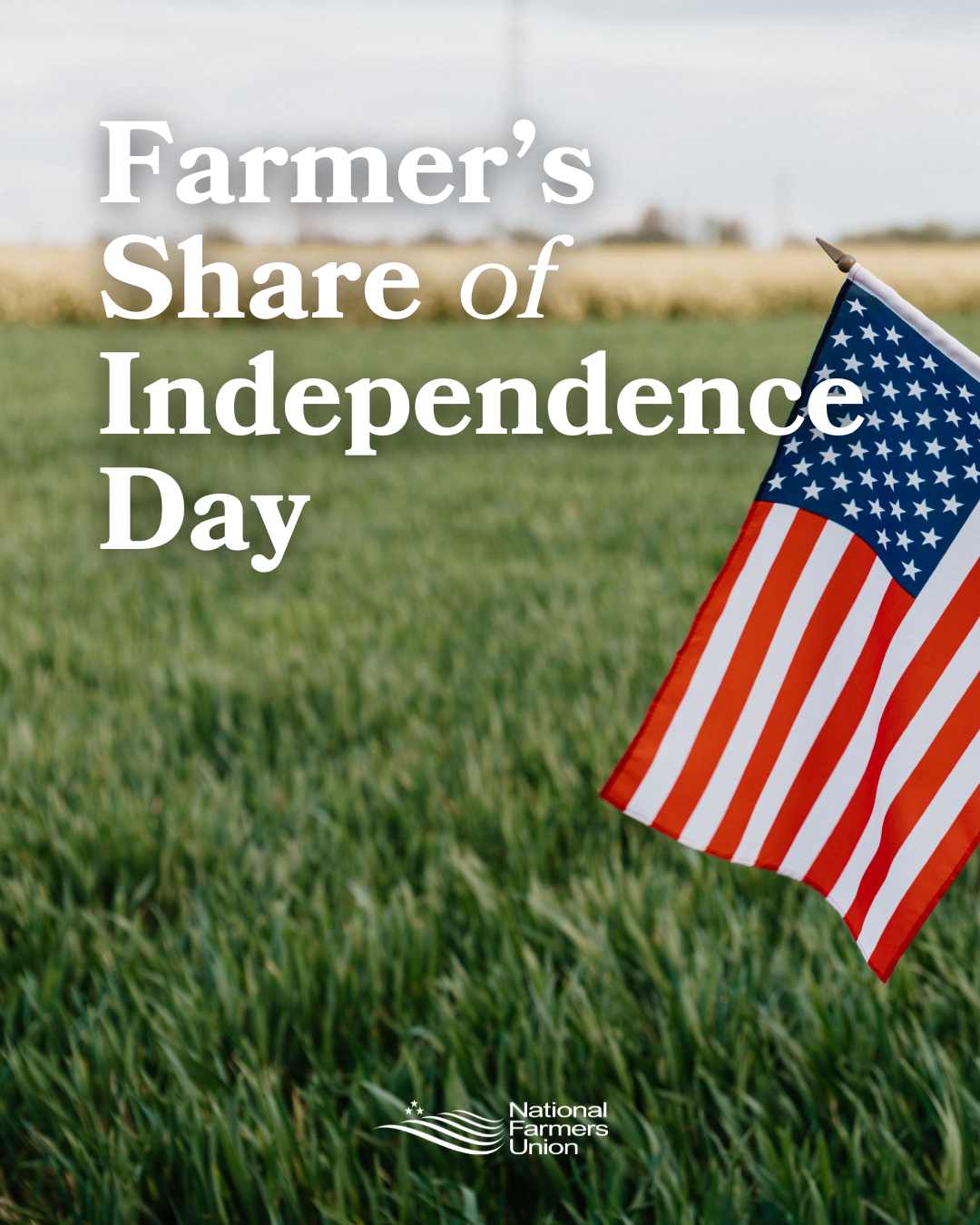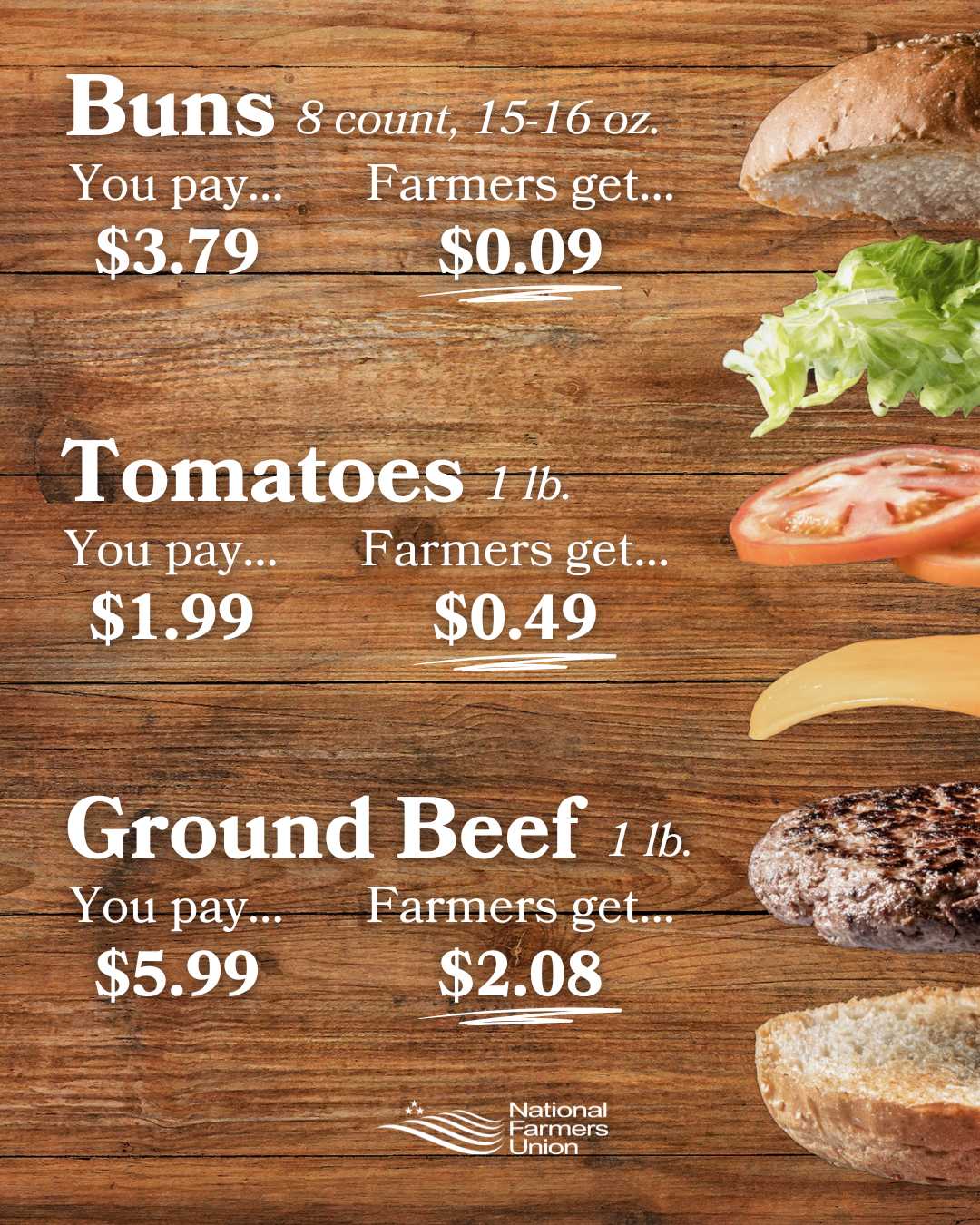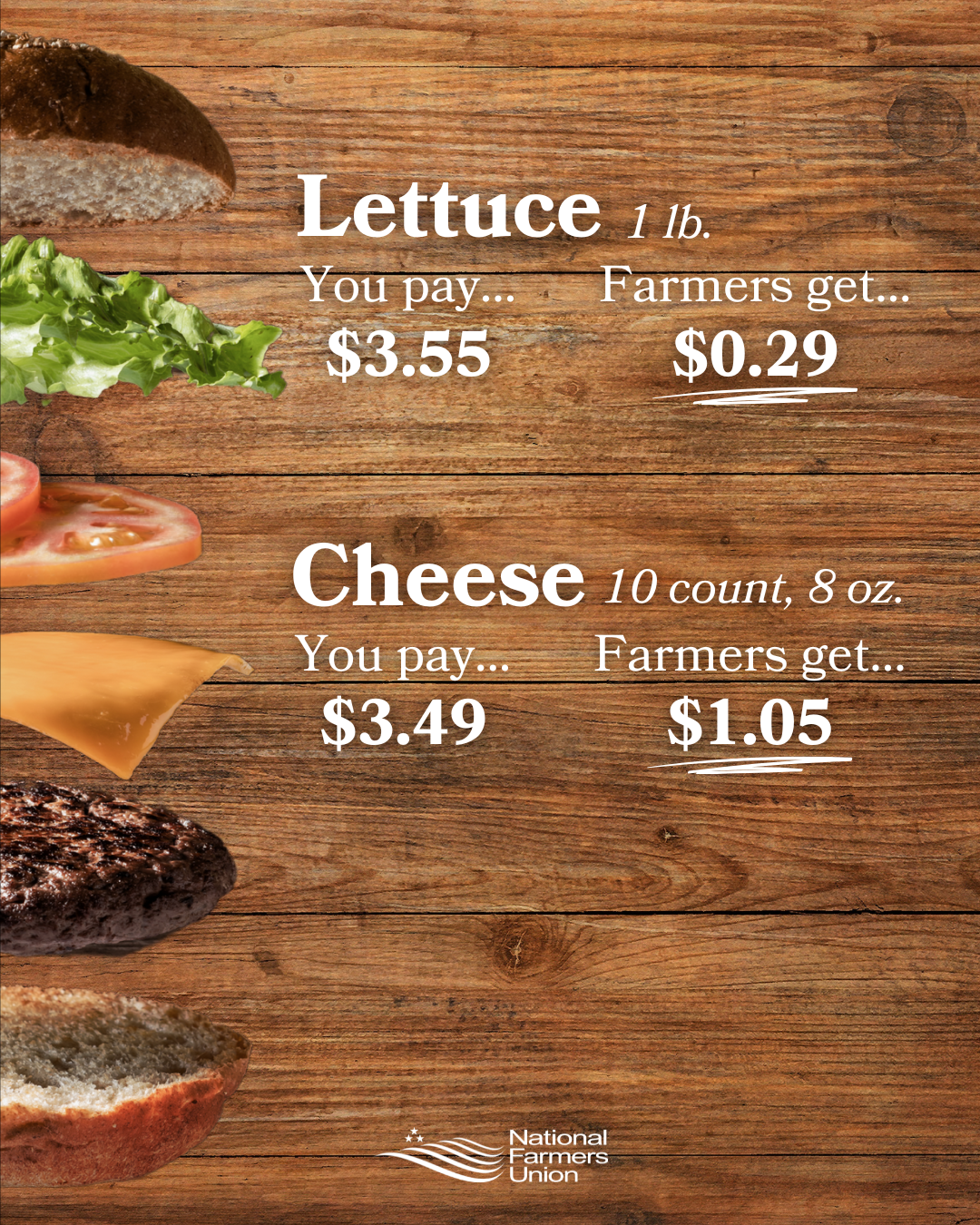
30 Jun On Independence Day, Family Farmers and Consumers Still Fight for Fairness in the Food System
As Americans fire up their grill this Independence Day, National Farmers Union highlights how little independence family farmers have in the marketplace. The “Farmer’s Share of the Food Dollar”, released June 30, is a periodical report highlighting how little family farmers earn compared to how much consumers pay at the grocery store.
“As we celebrate the Fourth of July, a day that symbolizes freedom, fairness, and opportunity, we must also shine a light on the growing imbalance in our food system,” said NFU President Rob Larew. “Family farmers and ranchers are working harder than ever, yet taking home less, while corporate monopolies in processing, distribution, and retail rake in record profits. Farmers deserve a fair share of the food dollar, and consumers deserve a food system that works for everyone, not just a handful of powerful corporations.”
Family farmers receive only a small fraction of popular Independence Day foods – an average as low as 16.3% for a $30 shopping cart according to the recent Farmer’s Share report. The numbers translate to Montana producers receiving roughly 75 cents per cheeseburger – something Montana Farmers Union is highlighting during several upcoming Farmer’s Share Days at various county fairs this summer.
During the events, fairgoers can experience the Farmer’s Share firsthand when they receive a coupon to purchase a cheeseburger for 75 cents. MFU then covers the difference of the actual cost at the food booth.
The exercise is a powerful real-time lesson that highlights the growing imbalance in the food system that favors powerful corporations over family farmers and ranchers.
Upcoming Farmer’s Share Day events are planned:
- July 24 – Lunch at Fergus County Fair
- August 2 – Lunch at Phillips County Fair
- August 6 – Lunch at Roosevelt County Fair
- August 7 – Lunch at Valley County Fair
It is more important than ever to promote Fairness for Farmers and consumers to address the monopoly crisis in food and agriculture as farmers face increasing uncertainty. Trade wars, low commodity prices, high input costs and the lack of a five-year farm bill are all adding strain to family farmers and ranchers.
MFU, alongside NFU, is actively addressing the monopoly crisis in food and agriculture through the Fairness for Farmers campaign, advocating for stronger antitrust enforcement and greater transparency to increase fairness for farmers and transparency for consumers.
Cookout Items | Retail Price: | Farmer’s Share: | % of consumer dollar received by producer |
Cheeseburger | |||
Hamburger Buns – 8 count, net weight 15-16 oz. | $3.79 | $0.09 | 2.3% |
Ground beef/chuck – 1 lb. | $5.99 | $2.08 | 34.7% |
Tomato – 1 lb. | $1.99 | $0.49 | 24.6% |
Lettuce – 1 lb. | $3.55 | $0.29 | 8.2% |
Cheese – 10 count, slices, net weight 8 oz. | $3.49 | $1.05 | 30.1% |
Fresh seedless watermelon, 1 lb. | $0.60 | $0.19 | 31.66% |
Corn on the cob, 4 count, net weight 16-18 oz. | $4.39 | $0.32 | 7.3% |
Potato Chips, 13 oz. | $5.99 | $0.36 | 6.01% |
Data for this publication were sourced from the U.S. Department of Agriculture’s National Agricultural Statistics Service and other industry sources.





Sorry, the comment form is closed at this time.